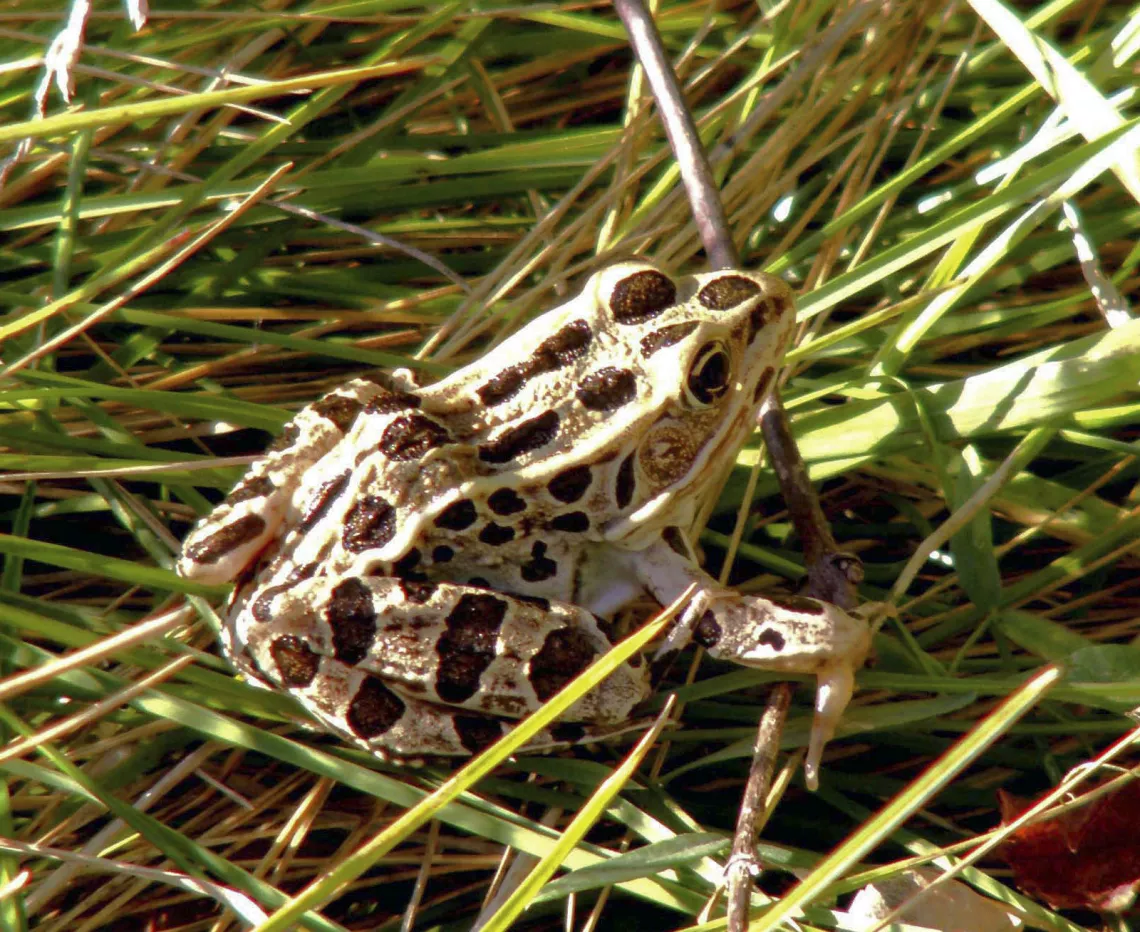
By Bob Suchanek
Water and Wetlands Steward
Froggy went a-courtin', and he did ride, Uh-huh,
Froggy went a-courtin', and he did ride, Uh-huh….
-Old Scottish Folk Song
It's February and I'm already thinking about frogs and spring. My frog loving ways go back to 1996 when I signed up as a frog counter with the Minnesota Frog and Toad Citizen Survey (MFTCS). I stayed with the survey for ten years, faithfully driving my assigned route after nightfall to ten preselected listening locations during three frog breeding periods each year.
The survey ended in 2017 and the final population results were generally positive for the locations sampled. Interestingly, the yearly dates for the breeding periods, highly dependent on water temperature, were sometimes quite variable due to differences in air temperature and snowmelt timing.
The purpose of the survey was to find which courting specie and how many of each were present at each time and location. Frogs are shy creatures, not easily herded and corralled for counting, so getting a simple population estimate was enough.
The Courting Schedule
Frogs begin their courting after the winter’s ice is gone and the water temps are comfortable, at least 50 degrees Fahrenheit. There were three official survey periods each year:
- Early spring, starting in April: minimum water temperatures of at least 50 degrees and air temperatures of at least 42 degrees Fahrenheit.
- Late spring, starting in May: minimum water temperatures of at least 60 degrees and air temperatures of at least 50 degrees Fahrenheit.
- Summer, starting in June: minimum water temperatures of at least 70 degrees and air temperatures of at least 55 degrees Fahrenheit.
If you’d like to count frogs, just take a walk by a wetland or pond and listen. If you think it’s a nice time to be outside, they might too.
There are 14 species of frogs and toads in Minnesota; fewer species are found regionally and locally. If you listen, you can learn to recognize your neighborhood amphibians and have a way of understanding the relative sizes of their local populations. By the way, toads are frogs, but not every frog is a toad.
I've found that verbalizing what each call sounds like is a great memory device that also makes conversations about who's singing easier. Here are good “sounds like” phrases to help you recognize the singers in Minnesota's amphibian choirs with some rough assignments to the singers performance times (keep in mind that calling and breeding begins earlier in southern Minnesota, later in northern Minnesota):
| Time of year | Frog type | Sounds like |
|---|---|---|
| March through late April | Wood Frog | A quacking duck |
| Boreal Chorus Frog | Strumming the teeth of a comb repeatedly | |
| Early April through early May | Spring Peeper | High-pitched peeps |
| Northern Leopard Frog | Low snores with grunts and squeaks | |
| Early May through late May | Pickerel Frog | Soft, low-pitched snores |
| Early May through early June | American Toad | 20-30 second high-pitched musical trills |
| Late May through early June | Canadian Toad | 8-second musical trills |
| Late May through late June | Gray Treefrog | 1-second high-pitched trills |
| Cope's Gray Treefrog | 1-second high-pitched metallic trills | |
| Northern Cricket Frog | Clicking ball bearings | |
| Early June through early July | Mink Frog | Pulling a stick along a picket fence |
| Green Frog | Plucking an out-of-tune banjo | |
| Bullfrog | “jug-a rum” over and over |
The Counting
When arriving at a wetland site, I’d turn off my car and let the frogs settle down and refocus before starting my count. When the courting was fully underway, I made my population identifications and number estimates.
Some nights were amazing! The enthusiastic calling of hundreds of courting male frogs could be almost deafening. This full chorus earned a count of ‘3’ for an excellent species performance. Sometimes a species was calling but I could assign only a ‘1’ because I could easily pick out individual callers. I assigned a ‘2’ if there were quite a good number of individuals, overlapping calls, and pauses.
Your Own Backyard Survey
Keeping track of frogs and toads in your neighborhood is a great way to connect to the natural world. This can be done day or night; all you need is ears, a little frog song identification practice, and a little time to do the counting.
Theories pass. The frog remains.
-French Biologist Jean Rostand
Some Sources:
Amphibians and Reptiles in Minnesota by John J. Moriarty and Carol D. Hall, Minnesota Department of Natural Resources, 2014
https://files.dnr.state.mn.us/volunteering/frogtoad_survey/Frog&toadsurvey.pdf
http://files.dnr.state.mn.us/volunteering/frogtoad_survey/mftcs_results2015.pdf
There are online sites that offer free expertly recorded frog calls. The Minnesota Department of Natural Resources site is focused on state amphibians: https://www.dnr.state.mn.us/reptiles_amphibians/frogs_toads/index.html
The most comprehensive call collection that I've found:
https://www.pwrc.usgs.gov/frogquiz/index.cfm?fuseaction=main.lookup